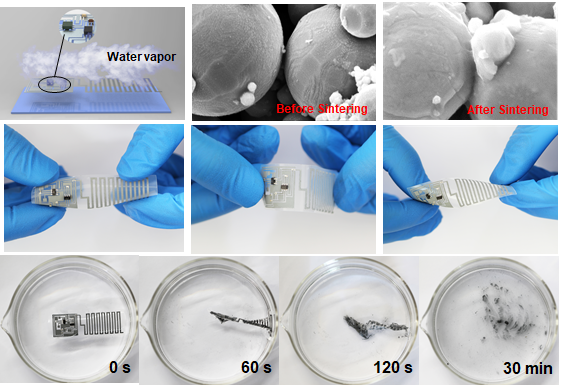Tianjin researchers discover new approach to sintering
The new printing technology of water sintering, recently developed by Tianjin University, is a world first and has made possible the production of bioresorbable and flexible electronic components – together with low energy consumption and low costs - according to university officials.
Tianjin University officials said that the water sintering breakthrough was achieved by Professor Huang Xian’s team from the School of Precision Instruments and Opto-Electronics Engineering.
The research results have been published in the authoritative international journal Advanced Functional Materials.
University officials said the technology is abreast with the latest trend of flexible electronic devices that are like folding computers, folding mobile phones and wearable digital products. These can work while being bent, folded, twisted, compressed or stretched.
It is significant considering the potential in areas such as energy sources, medical care and information and communications.
In addition, flexible electronic printing methods are key to the manufacture of flexible electronic devices. The theory behind it is to use precision printing technology to make electronic devices or circuits, where color-expressing ink is replaced with electronic functions. This enables the graphics printed on the flexible substrate – the support material on which a circuit is fabricated - to have electronic functions. University officials said the technology of water sintering reduces costs compared with current mainstream international processing methods. These include high temperature heating, laser sintering and optical pulse sintering, which are expensive and prone to damage the circuit substrate.
The new nanometer metallic conductive ink - and the new sintering method - uses water vapor to create flexible electronic circuits at room temperature without the need for high temperatures, lasers or high intensity light pulses.
Researchers said it is particularly worth mentioning that the flexible electronic components produced by the water-induced sintering method can work stably for a long time under normal operating conditions. They said it can achieve non-toxic degradation under specific humidity, which appears to possess good bioresorbability - and added this process has wide prospective applications in the field of biomedicines.
According to Professor Huang Xian, the printing technology of water sintering and nano conductive ink can eliminate the need for users to buy expensive sintering equipment.
The cost of mass production of flexible electronic components is expected to drop to 1% of the current cost, Professor Huang said.
"The handling and processing technology of new flexible electronic components will greatly benefit the large-scale commercial production of bioresorbable flexible electronic devices," he added.
 |
|
A schematic diagram of water-induced sintering and the comparison before and after sintering - as well as a flexibility display and a depiction of the dissolution characteristics of the device after sintering. |


















